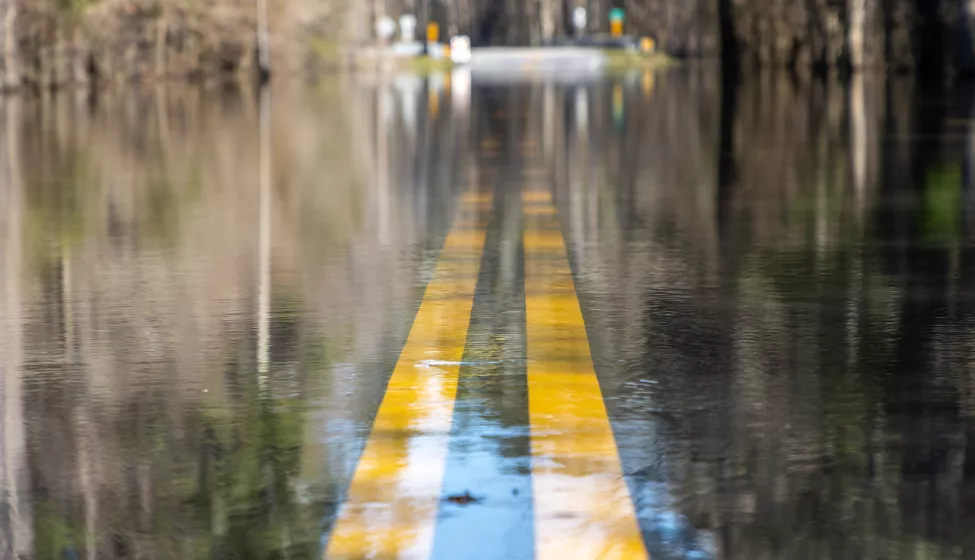December 10, 2019
Of the 246 weather disasters that struck the U.S. between 1980 and April 2019, hurricanes caused the most damage, at an average cost of $22 billion per event.1 Three of the top five costliest U.S. hurricanes on record, Harvey, Maria, and Irma, occurred in 2017 alone.2
Property owners and insurance companies rely on high-quality hurricane investigations to quantify damage after a storm. If an investigation reaches faulty conclusions, insurance companies can overpay, underpay, or improperly deny a claim. In the first quarter of 2018 alone, the top twenty property insurers in Florida were served with nearly 11,000 lawsuits.3 Many of the claims asserted that the reimbursement to restore a homeowner to pre-loss conditions was inadequate. Perceived problems with engineering reports following Hurricane Sandy resulted in class action litigation, a raid by the New York attorney general's office, and FEMA's reopening 144,000 claims.3
Had engineers provided high-quality technical reports in the beginning, stakeholders may have avoided the time and cost associated with much of this litigation. Whether for single-family residences, commercial complexes, or industrial facilities, high-quality hurricane investigations require the accurate separation of wind damage from flood damage using state-of-the-art modeling and effective quality control.
Separation of Wind versus Flood Damage
A complicating factor in assessing hurricane losses is that wind damage and flood damage are typically covered under separate insurance policies. Accurate separation of wind versus flood damage is thus a critical component of many hurricane investigations.
Hurricane Katrina in 2005 is a prime example of a storm where careful separation of damage due to wind versus flood was needed. With a storm surge much higher than the 100-year flood elevation at some locations, wind speeds of up to 140 mph at landfall, and thousands of homes destroyed, the cause of the damage was often a key issue.
Exponent teams inspected hundreds of buildings following Hurricane Katrina, identified the causes of damage, and developed appropriate scopes of work to return the buildings to their pre-storm condition. Accurate separation of wind and flood damage was an essential component of this work, as insurers relied on our findings to determine whether or not a particular type of damage was covered under their policies.
State-of-the-Art Modeling
Some hurricane investigations require the use of more advanced analyses. If data from public sources is not available for a particular location, or if wind speed and storm surge timing are important, engineers and scientists can model site-specific wind speeds and quantify their effect on storm surge and specific structures.
Our team at Exponent uses state-of-the-art tools that are widely accepted within the engineering community to conduct scientific storm modeling. This includes using planetary boundary layer (PBL) models, hydrodynamic models (e.g., RMA-2 and ADCIRC), and the Empirical Simulation Technique (EST) to conduct a full analysis of coastal storm surge. We also use bathymetric and onshore topographic data, historical tidal information, meteorological data, and integration of Light Detection and Ranging (LiDAR) data where appropriate. For buildings with unusual geometries or locations, computational fluid dynamics (CFD), or wind-tunnel testing may be warranted to accurately estimate the wind forces experienced during the hurricane.
In addition to post-storm investigations, our team performs proactive risk assessment studies, such as storm surge frequency probability analyses and Monte Carlo simulations, to determine the extent of inundation that could be expected from hurricanes.
Quality Control
It is important for hurricane investigators to embed robust quality controls throughout their investigation and reporting processes. Some engineering firms subcontract out services rather than performing them internally. Since this may make it difficult to control the quality of the investigation, it is important for homeowners and insurance companies to find out what controls will be put in place to ensure they get a quality product.
Exponent typically performs all services in house using full-time engineering staff, many of whom have advanced degrees and are published in the field of hurricanes. Because our work is performed internally, we can control the end-to-end quality of both the investigation and the report delivered to clients. Our reports pass through a rigorous peer-review process to ensure that the information conveyed is accurate and clearly focused on answering the client's questions and concerns.
How Exponent Can Help
Our multi-disciplinary team of engineers, scientists, and statisticians are experts at assessing hurricane damage. With over two decades of institutional knowledge, we can quickly and cost-effectively manage a wide range of projects, from single-family residences to commercial complexes and industrial facilities. Exponent has helped advance the state of engineering practice in this field through national webinars with the American Society of Civil Engineers (ASCE), and Exponent engineers spearheaded the preparation of a book on hurricane damage investigations published by ASCE.
Sources
1 https://www.govtech.com/em/disaster/Sandy-Insurers-Battle-Flood-Claim-Lawsuits.html


